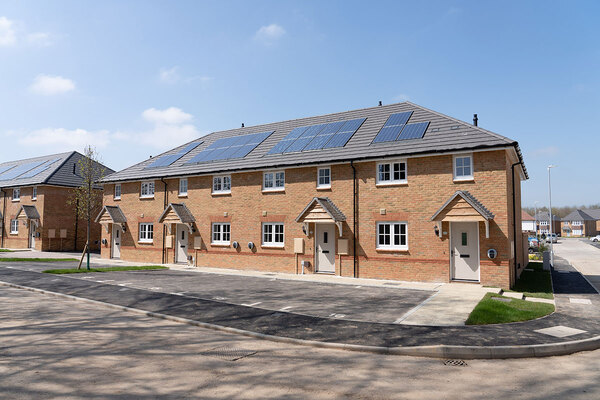You are viewing 1 of your 1 free articles
We need a new funding approach beyond grant
Government-guaranteed debt can do more to unlock affordable rent housing, writes Will Damazer, associate director at Social Finance
The prime minister recently reaffirmed an ambitious government target to build 1.5 million new homes, including a generational increase in social housing, and acknowledged bold action is needed to get there.
Social housing development has always relied heavily on government financial support. However, the steep decline in the economic conditions facing social housing providers means the amount of support required per home has roughly doubled over the past three years.
This is especially unwelcome at a time of constrained public finances. Innovation is urgently needed. Social Finance’s analysis has found that an increased role for long-term government-guaranteed debt in the subsidy mix could transform the provision of affordable housing.
With a record number of people stuck in temporary accommodation, we are in desperate need of more affordable rent social housing. Reforms to the planning system and mandatory housebuilding targets will not be enough to meet the ambition for affordable housing supply.
More funding is needed – funding that is at the right cost and debt service profile. This is required to encourage hard-pressed housing associations to invest in new discounted rent stock that has traditionally been a cash drain in the early years following investment.
From a policy perspective, there is also a compelling case to reallocate more government support toward supply side measures and away from demand-side measures such as housing benefit, which is costing £30bn per annum and is forecast to increase to over £70bn per annum by 2050.
“Reforms to the planning system and mandatory housebuilding targets will not be enough to meet the ambition for affordable housing supply”
Capital grant, delivered via Homes England or the Greater London Authority in the the capital, is the most significant direct government development support currently.
However, supplies of grant are limited, and rising building costs and interest rates mean each £1 of capital grant goes much less far. Just a few years ago, grant of 30% of the cost of a new house was commercially feasible. Today, you would need 50% to 70% capital grant.
Under these conditions, the £12bn 2021-26 Affordable Homes Programme (AHP) is looking like it will produce closer to 90,000 affordable homes compared with the 180,000 initially targeted.
Social Finance, supported by the Joseph Rowntree Foundation, is proposing a new funding approach: the Affordable Homes Acquisition Scheme or AHAS. The core element is long-term (30-year) finance raised from institutional investors at a small premium over the gilt rate and with debt service costs profiled to better match the lifetime cash earnings from managing an affordable rent portfolio – ie cheap to start with and more expensive later.
Use of government-guaranteed debt reduces finance costs, but critically it allows debt service payments to be structured in line with projected portfolio earnings, offering a financially sustainable approach to support new affordable housing supply.
Structured as a new housing vehicle, off the balance sheets of both housing associations and government, AHAS has the potential to reverse the increased capital grant requirement, thereby offering a scalable solution to affordable rent housing provision.
“Deployed alongside current government initiatives, AHAS has the potential to stimulate the creation of new affordable homes with reduced grant at scale”
For the government, the debt is a contingent liability only and does not weigh so heavily on the national accounts as new borrowing. For housing associations that will manage the homes and own a stake in AHAS, it provides a route to expanding their affordable rent provision without overburdening their own balance sheets where retrofit and cladding rectifications are taking away growth capacity short term.
The AHAS model should be complementary to current government initiatives, notably the £12bn AHP and the £6bn Affordable Homes Guarantee Scheme. Using proportionally less grant in the subsidy mix than a typical AHP model, AHAS could help make grant go further. Social Finance estimates that the level of capital grant required can be reduced by up to 35% points relative to the AHP.
An initial pilot of £500m is proposed that could support 2,500 to 3,000 new affordable rent homes. Thereafter, the scheme could scale to £2bn annually, helping to increase the delivery of homes for affordable rent by 25% relative to current figures. Deployed alongside current government initiatives, AHAS has the potential to stimulate the creation of new affordable homes with reduced grant at scale.
Will Damazer, associate director, Social Finance
Sign up for our development and finance newsletter
Already have an account? Click here to manage your newsletters













